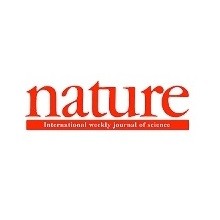
جهشها در پذیراگر ویتامین D و راشی تیسم های ارثی مقاوم در برابر ویتامین D
کمبود ناهمگن جهشهای عملکرد در گیرنده ویتامین D با علامتدهی ویتامین D در تداخل بوده و باعث بروز راشیتیسمهای ارثی مقاوم در برابر ویتامین D میگردد. HVDRR توسط کلسیم بالا، هایپرپاراترودیسم ثانویه و راشیتیسمهای جدی در کودکی طبقهبندی شده و اغلب مرتبط به هم خونی است. امکان دارد که بچههای تحت تأثیر نیز alocepiao و کل بدن را نشان دهند. معمولا بچهها در واکنش نشان دادن در مقابل درمان با Calcitriol ناموفق هستند. در واقع، اغلب سطوح همگنی آنها بسیار بالا میرود. درمان موفقیتآمیز مستلزم تغییر هایپوکلسیم بوده و معمولا توسط استفاده از دوزهای بالای کلسیم انجام میگردد که یا داخل رگ یا گاهی اوقات از راه دهان داده میشود جهت نادیدهگیری کمبود در علامت VDR.
مقدمه
ویتامین D، هنگام تشکیل در پوست که از انرژی نور خورشید استفاده میکند یا مستقیما به عنوان ویتامین D فرو میرود، شکل اولیه و غیرفعالی است که مستلزم دو مرحله هیدروکسیل، ابتدا در جگر و سپس در کلیه میباشد. جهت تبدیل به دی هیدروکسی ویتامین 1a,25,D3، هورمونهای فعال، سپس 1,25(OH2)D3 ربط مییابد به پذیراگر ویتامین D جهت تغییر اقدامات هورمون. VDR در انواع سلول منتخب در اکثر موارد مشاهده میگردد. اگر که تمام بافتها در بدن نباشند و مجموعههای 1,25(OH2)D3/VDR به تنظیم ژنهای چندتایی در بافتهایی میپردازند که دربردارندهی VDR هستند. گر چه اقدامات غیراستخوانبندی ویتامین D در تمام بافتهای مجاور VDR مشاهده شدهاند، اما مشخصترین اقدامات ویتامین D در روده، کلیه، پاراتیروئید و استخوان صورت میگیرد. اندامهایی که به تنظیم کلسیم و متابولیسم فسفات میپردازند و مسئول معدنیسازی نرمال استخوان میباشند. در نبود مقادیر کافی هورمون فعال یا پذیراگر عملی، جذب کلسیم و فسفات ضعیف بوده و میزان بالای کلسیم توسعه مییابد. این امر منجر میگردد به هایپرپاراتیرودیسم جبرانی، نقوص هیپوفسفات و اسکلتی در معدنی سازی استخوان که منجر میگردد به پروتئینهای شاخص استخوان یا Osteoid. هنگامی که این ترتیب وقایع در بزرگسالان روی میدهد، راشیتیسمهای بیماری توسعه مییابد. این شرایط و پیامدهای پزشکی ارائه شده برای استخوان به صورتی وسیع در دیگر بخشهای این بافت خاص مورد بحث قرار میگیرند.
Heterogeneous loss of function mutations in the vitamin D receptor (VDR) interfere with vitamin D signaling and cause hereditary vitamin D-resistant rickets (HVDRR). HVDRR is characterized by hypocalcemia, secondary hyperparathyroidism and severe early-onset rickets in infancy and is often associated with consanguinity. Affected children may also exhibit alopecia of the scalp and total body. The children usually fail to respond to treatment with calcitriol; in fact, their endogenous levels are often very elevated. Successful treatment requires reversal of hypocalcemia and secondary hyperparathyroidism and is usually accomplished by administration of high doses of calcium given either intravenously or sometimes orally to bypass the intestinal defect in VDR signaling.
Introduction
Vitamin D, when formed in the skin utilizing the energy of sunlight or ingested as dietary vitamin D, is an inactive precursor requiring two hydroxylation steps, first in the liver and then the kidney, to be converted to 1a,25-dihydroxyvitamin D3 (1,25(OH)2D3 or calcitriol), the active hormone. As described in other chapters in this special issue.1–4 1,25(OH)2D3 then binds to the vitamin D receptor (VDR) to mediate the actions of the hormone. The VDR is present in selected cell types in most if not all tissues in the body and 1,25(OH)2D3/VDR complexes regulate multiple target genes in tissues containing the VDR.5 Although non-skeletal actions of vitamin D have been found in all tissues harboring a VDR, the most well-recognized actions of vitamin D take place in the intestine, kidney, parathyroids and bone, organs that regulate calcium and phosphate metabolism and that are responsible for normal mineralization of bone. In the absence of either adequate amounts of the active hormone (1,25(OH)2D3) or a functional receptor (VDR), calcium and phosphate absorption is impaired and hypocalcemia develops. This results in compensatory hyperparathyroidism, hypophosphatemia and skeletal defects in bone mineralization leading to under-mineralized portions of the bone matrix or osteoid. When this sequence of events occurs in children, the disease rickets develops; when it occurs in adults, osteomalacia develops. These conditions and the medical consequences for bone are discussed extensively in other chapters of this special issue.6–9
مقدمه
بررسی ساختار VDR مرتبط به جهشهای HVDRR
ظاهر کلینیکی بچهها با HVDRR
جهشهای موجود در ژنهای VDR به عنوان اصل مولکولی برای HVDRR
مدلهای حیوانی HVDRD: موش فاقد VDR
درمان HUDRR
Alopecia
اطلاعات اخیر در زمینهی بچهها با HVDRR به هنگامی که آنها بزرگ میشوند.
HVDRR Cells Used as Reagents to Study Actions of the VDR
نتیجهگیریها
Introduction
Overview of the Structure of VDR Relevant to HVDRR Mutations
The Clinical Appearance of Children with HVDRR
Mutations in the VDR Gene as the Molecular Basis for HVDRR
Animal Models of HVDRR: the VDR-Null Mouse
Treatment of HVDRR
Alopecia
Recent Data on Children with HVDRR as they Grow Up
HVDRR Cells Used as Reagents to Study Actions of the VDR
Conclusions
- ترجمه فارسی مقاله با فرمت ورد (word) با قابلیت ویرایش، بدون آرم سایت ای ترجمه
- ترجمه فارسی مقاله با فرمت pdf، بدون آرم سایت ای ترجمه
